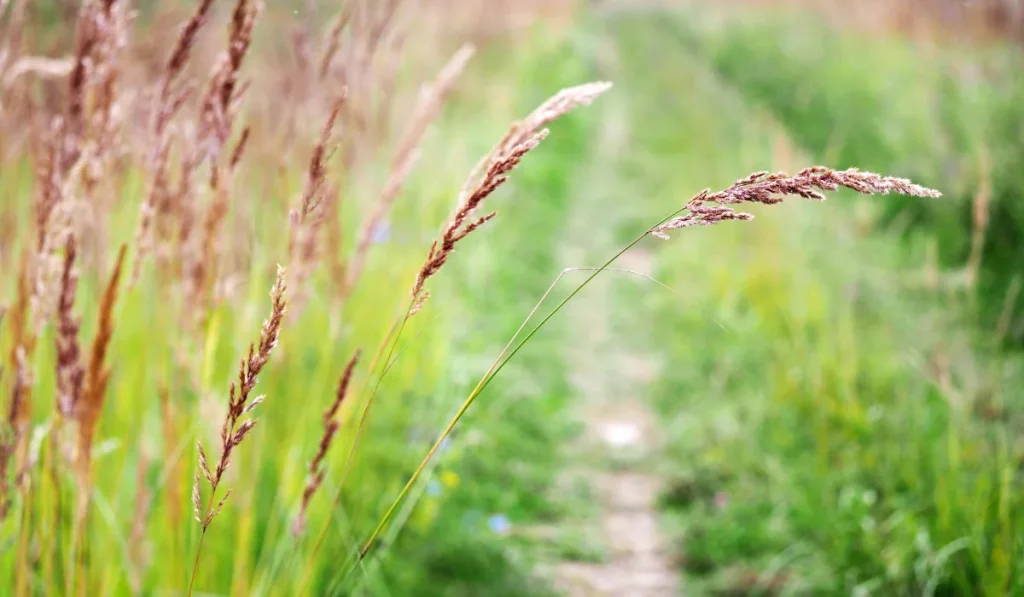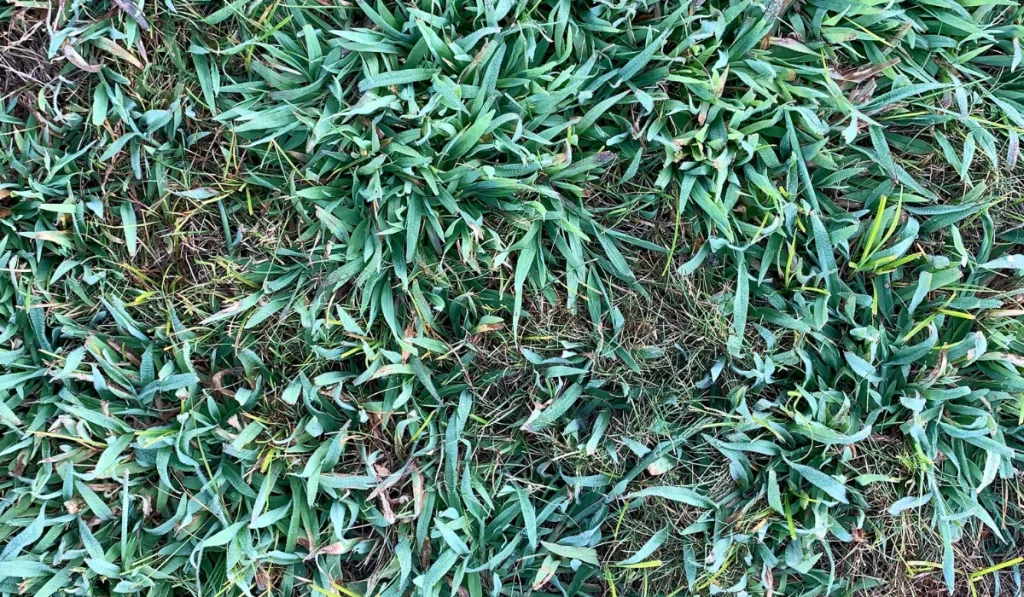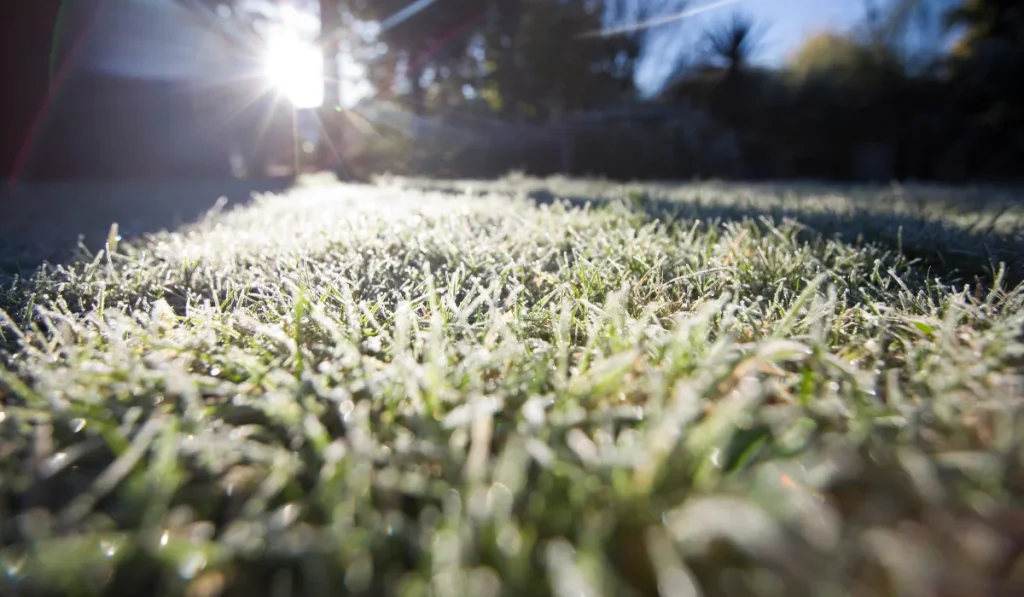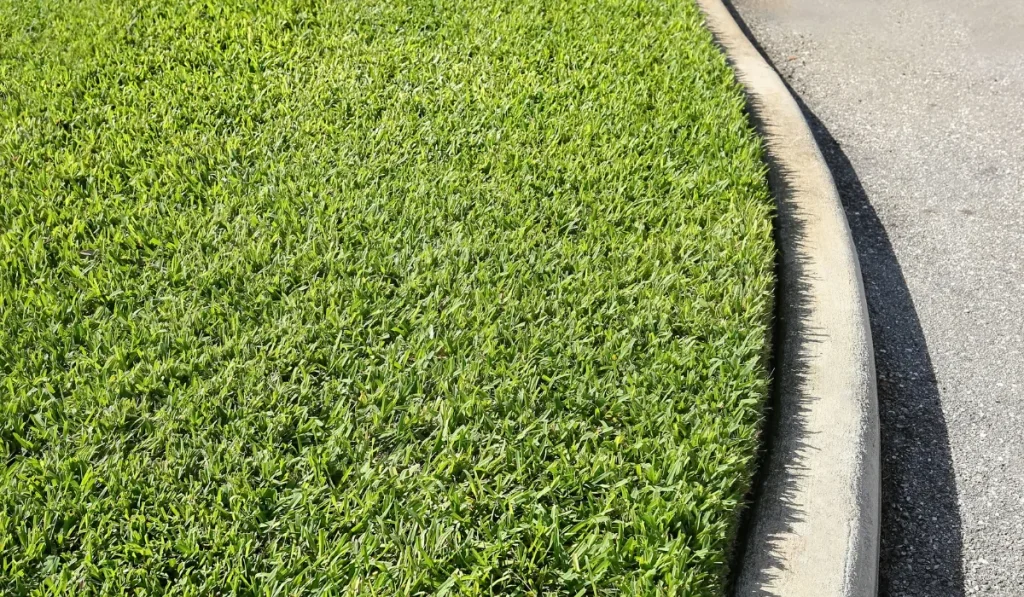California’s diverse landscape is adorned with a variety of native grasses, each playing a unique role in the environment. In addition to looking beautiful, natural grasses can help you save water, reduce pesticide use, and support wildlife.
So, if you’re looking to landscape your yard in a way that stays true to your California roots, read on.
Key Takeaways
- California boasts a variety of native grass blends, like Native Mow Free, Native Bentgrass, Delta Grassland Mix, Native Preservation Mix, and Biofiltration Sod.
- Low maintenance requirements make native grasses a practical option for landscaping.
- California’s native grasses can help support the state’s natural ecosystem and sustainability.
What Grasses Are Native to California?
California is known for a wide variety of native grasses that enhance the local ecology and landscape aesthetic.
Fully adapted to California’s climate, these blends offer a low-maintenance alternative to traditional lawns and are beneficial to local wildlife.
Native Mow Free
| Aspect | Maintained & Irrigated Applications | Non-Maintained & Non-Irrigated Applications |
| Leaf Texture | Fine | Fine |
| Soil Type | All | All |
| Water Use | Low | During Establishment |
| Shade Tolerance | 50% | 50% |
| Water Tolerance | Low | Low |
| Mowing Height | 4” – 6” | 12” – 18” |
Native Mow Free is a blend that combines several types of grasses that thrive with minimal care.
Besides Festuca californica (California fescue), other key components of Native Mow Free often include:
- Festuca idahoensis (Idaho fescue)
- Festuca rubra (Molate fescue)
- Festuca occidentalis (Western Mokelumne fescue)
The different fescue species’ clumping growth habit and deep green glossy blades make it ideal for creating a meadow-like appearance.
This mix often integrates well with wildflowers, adding splashes of color.
Native Bentgrass
| Aspect | Maintained & Irrigated Applications | Non-Maintained & Non-Irrigated Applications |
| Leaf Texture | Medium | Medium |
| Soil Type | All | All |
| Water Use | Low | During Establishment |
| Shade Tolerance | Partial | Partial |
| Water Tolerance | Low | Low |
| Mowing Height | 1 ½” – 2” | 12” – 18” |
Native Bentgrass, also known as Agrostis pallens, is a medium-textured grass prevalent in California’s natural habitats.
Complemented by Red Fescue, its adaptability allows it to flourish in full and part-shade, making it a versatile choice for gardeners.
This California native plant is particularly known for its strong sod, effective as a weed barrier. It is also commonly used in areas that emulate natural meadows due to its uniform growth habit.
Delta Grassland Mix
| Aspect | Maintained & Irrigated Applications | Non-Maintained & Non-Irrigated Applications |
| Leaf Texture | Fine | Fine |
| Soil Type | All | All |
| Water Use | Low | During Establishment |
| Shade Tolerance | Partial | Partial |
| Water Tolerance | Low | Low |
| Mowing Height | 4” – 6” | 18” – 24” |
Delta Grassland Mix is a luxurious blend of soft grass ideal for the Pacific region.
Thriving in the foothills of California, it features a vibrant emerald green color and narrow blades.
Key components of Native Mow Free often include:
- Deschampsia elongata (Slender Hairgrass)
- Festuca rubra (Molate fescue)
- Koleria macrantha (Junegrass)
Its unique texture and hue lend a distinctive European charm. As a tuft-forming grass, it’s an ideal choice for enhancing the beauty of ornamental and rooftop gardens.
Native Preservation Mix
| Aspect | Maintained & Irrigated Applications | Non-Maintained & Non-Irrigated Applications |
| Leaf Texture | Fine | Fine |
| Soil Type | All | All |
| Water Use | Low | During Establishment |
| Shade Tolerance | Partial | Partial |
| Water Tolerance | Low | Low |
| Mowing Height | 4” – 6” | 18” – 24” |
The Native Preservation Mix exhibits an intricate beauty from the blend of a variety of durable species like:
- Koleria macrantha (Junegrass)
- Stipa pulchra (Purple needlegrass)
- Nessella cernua (Nodding needlegrass)
- Festuca rubra (Molate fescue)
It may also feature other California native grass species, such as Muhlenbergia rigens (Deergrass), Bouteloua gracilis (Blue Grama), and Deschampsia cespitosa (Tufted Hairgrass).
The blend benefits from incorporating Aristida purpurea (Purple Three Awn), which is magnificently displayed through a rolling meadow effect.
With a wide ground cover, this effect not only enhances the aesthetic appeal of the environment but also invokes a sense of tranquility and harmony with nature.
Biofiltration Sod
| Aspect | Maintained & Irrigated Applications | Non-Maintained & Non-Irrigated Applications |
| Leaf Texture | Course-Medium | Course-Medium |
| Soil Type | All | All |
| Water Use | Low | During Establishment |
| Shade Tolerance | Prefers Full Sun | Prefers Full Sun |
| Water Tolerance | Low | Low |
| Mowing Height | 4” – 6” | 18” – 31” |
Biofiltration sod represents an innovative blend of both dryland and wetland plant species, with its mix including sedge varieties such as Carex.
It is uniquely adapted to thrive under extreme conditions. Its key components often include:
- Nasella pulchra (Purple needlegrass)
- Festuca rubra (Molate fescue)
- Hordeum californicum (California barley)
- Hordeum brachyantherum (Meadow barley)
This versatile sod offers more than just resilience. Its dual capability to withstand diverse moisture conditions makes it an ideal solution for areas requiring robust environmental management and erosion control.
How to Care for California Native Grasses
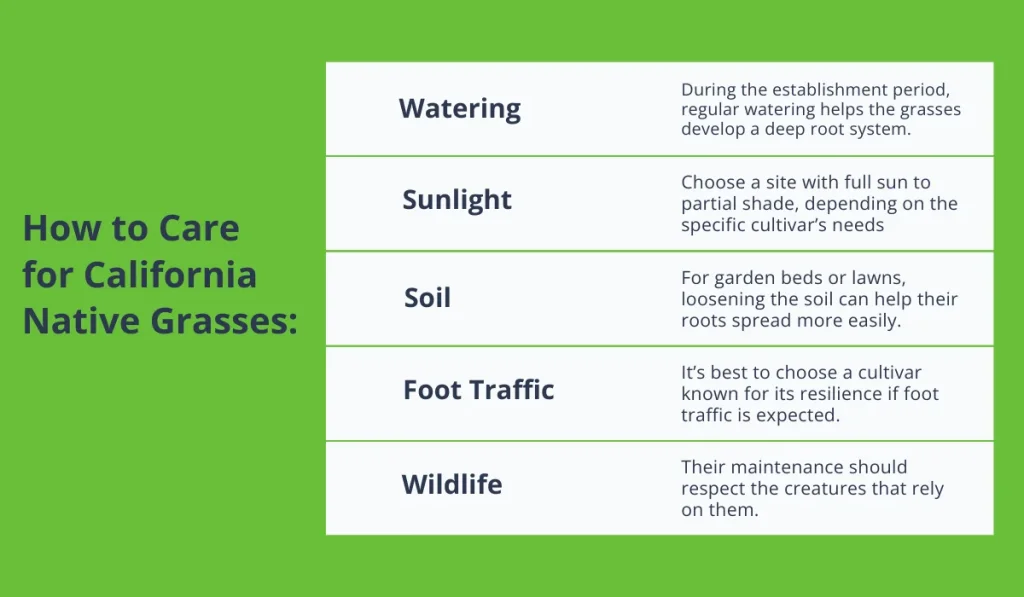
When incorporating California native grasses into the landscape, understanding the specific requirements of planting and ongoing lawn care is crucial.
These grasses often require less upkeep than their non-native counterparts, making them ideal for gardeners looking to reduce maintenance.
Watering
Grasses native to California are generally drought-tolerant. During the establishment period, regular watering helps the grasses develop a deep root system.
Once established, they often require minimal water, especially in the winter.
However, during prolonged dry spells or hot summers, supplemental watering may be necessary to keep them healthy.
Sunlight
Choose a site with full sun to partial shade, depending on the specific cultivar’s needs. Most native grasses thrive with direct sunlight, but some varieties can tolerate or even prefer some shade.
Soil
These grasses are fine with soil and can often thrive in the local dirt. For garden beds or lawns, loosening the soil can help their roots spread more easily.
- Fertilization: Generally, California native grasses need little to no fertilization. Over-fertilizing can lead to weak growth and more frequent watering requirements.
- Mowing: Some native grasses can be left uncut for a natural look, while others may be trimmed to maintain a tidy appearance or used as pasture grass.
Foot Traffic
Many native grasses can withstand moderate foot traffic, making them suitable for use as lawn alternatives. However, it’s best to choose a cultivar known for its resilience if foot traffic is expected.
Wildlife
These grasses provide habitat and food for garden-friendly wildlife. Their maintenance should respect the creatures that rely on them.
